A rare topic that's not about gear or exposure modes: the role of perspective in compositions. Please share your photos!
Aug 20, 2018 08:19:56 #
Many thanks to new and returning participants! If any of you followed to the end, you have hopefully read the thoughtful commentary that did not include photo examples, but also you have seen the pitfalls of an open forum: how easy it is to get bogged down in lengthy disagreements - or lectures - that, in the end, are only meaningful to those who enjoy debate or the sound of their own voice.
I just spent an hour going back over the thread to produce the below results, and I am gratified and grateful for all those who contributed their time!
To recap using my opening bullet points:
1. Relative size/distance - Photos: randomeyes page 1, camerapapi page 2, Gene51 page 3 where he expressed relative size as SCALE, JD750 page 3 (example of real relative size ), fuminous page 4 for an excellent example of lack of visual cues, via the lens page 4, repleo page 4, rpavich page 5, R.G. page 5, 10MPlayer page 6, RichardTaylor page 7 (excellent use of successful vs. unsuccessful pair to compare), magnetoman page 7
), fuminous page 4 for an excellent example of lack of visual cues, via the lens page 4, repleo page 4, rpavich page 5, R.G. page 5, 10MPlayer page 6, RichardTaylor page 7 (excellent use of successful vs. unsuccessful pair to compare), magnetoman page 7
2. Linear perspective, vanishing lines. Photos: Camerapapi page 2, artbob page 3, repleo page 3, mallen1330 page 4, via the lens page 4, repleo page 4, Rich1939 page 6, magnetoman page 7
3. Except with distortion of very near objects using an ultra-wide angle, focal length itself does not cause perspective change. It does cause the illusion of compression or distance, so you as the photographer can use this knowledge and apply it to how you want the image to look. Photos: my apple orchard page 1, R.G. page 2 (comparison shots are such great learning tools!), pmorin page 2, repleo page 3, RichardTaylor page 3, mallen1330 page 4, rehess page 4, via the lens page 4, selmslie page 5, my forced perspective page 6, User ID page 7
4. Atmospheric conditions - color saturation decreases, details become less pronounced. This is one way our brain understands distance. Photos: my haze and fog photos page 2, Gene51 touches on the role of color saturation on page 3. Pmorin page 6
5. The "fun stuff" part, shooting from an angle that's not the everyday view. Photos: my apple page 1, Chaostrain page 2, kenievans page 2, DNW page 3, CO page 2, JD750 page 4, rich1939 page 5, Anhanga Brasil page 6, 10MPlayer page 6, magnetoman page 7
6. (not mentioned in opening) - use of focal point and depth of field, first brought up by artbob on page 2, then Gene51 on page 3.
Again, thank you all for participating!
I just spent an hour going back over the thread to produce the below results, and I am gratified and grateful for all those who contributed their time!
To recap using my opening bullet points:
1. Relative size/distance - Photos: randomeyes page 1, camerapapi page 2, Gene51 page 3 where he expressed relative size as SCALE, JD750 page 3 (example of real relative size
 ), fuminous page 4 for an excellent example of lack of visual cues, via the lens page 4, repleo page 4, rpavich page 5, R.G. page 5, 10MPlayer page 6, RichardTaylor page 7 (excellent use of successful vs. unsuccessful pair to compare), magnetoman page 7
), fuminous page 4 for an excellent example of lack of visual cues, via the lens page 4, repleo page 4, rpavich page 5, R.G. page 5, 10MPlayer page 6, RichardTaylor page 7 (excellent use of successful vs. unsuccessful pair to compare), magnetoman page 72. Linear perspective, vanishing lines. Photos: Camerapapi page 2, artbob page 3, repleo page 3, mallen1330 page 4, via the lens page 4, repleo page 4, Rich1939 page 6, magnetoman page 7
3. Except with distortion of very near objects using an ultra-wide angle, focal length itself does not cause perspective change. It does cause the illusion of compression or distance, so you as the photographer can use this knowledge and apply it to how you want the image to look. Photos: my apple orchard page 1, R.G. page 2 (comparison shots are such great learning tools!), pmorin page 2, repleo page 3, RichardTaylor page 3, mallen1330 page 4, rehess page 4, via the lens page 4, selmslie page 5, my forced perspective page 6, User ID page 7
4. Atmospheric conditions - color saturation decreases, details become less pronounced. This is one way our brain understands distance. Photos: my haze and fog photos page 2, Gene51 touches on the role of color saturation on page 3. Pmorin page 6
5. The "fun stuff" part, shooting from an angle that's not the everyday view. Photos: my apple page 1, Chaostrain page 2, kenievans page 2, DNW page 3, CO page 2, JD750 page 4, rich1939 page 5, Anhanga Brasil page 6, 10MPlayer page 6, magnetoman page 7
6. (not mentioned in opening) - use of focal point and depth of field, first brought up by artbob on page 2, then Gene51 on page 3.
Again, thank you all for participating!
Aug 20, 2018 08:37:09 #
Linda From Maine wrote:
... 3. Except with distortion of very near objects using an ultra-wide angle, focal length itself does not cause perspective change. ... Photos: my apple orchard page 1, R.G. page 2 (comparison shots are such great learning tools!), pmorin page 2, repleo page 3, RichardTaylor page 3, mallen1330 page 4, rehess page 4, via the lens page 4, selmslie page 5, my forced perspective page 6, User ID page 7 ...
You missed CaptainC on page 1.
Aug 20, 2018 09:24:07 #
selmslie wrote:
He was covered under my comment, "you have hopefully read the thoughtful commentary that did not include photo examples,", but I will list all who did not include photos and some who did, but on other pages:You missed CaptainC on page 1.
Captain C page 1
cwilson341 page 1
Gene51 addressing Captain C's point (page 3)
fuminous page 4
Bipod page 4
blackest page 5
kenievans page 5 (with link to an article)
granbob page 5
Many thanks to everyone!
Aug 20, 2018 12:10:07 #
artBob wrote:
That statement made me question what I know about ... (show quote)
Nope. Same camera-to-subject distance will yield ZERO perspective change. It simply is not possible. You can do all the lens/focal length changing you want and it will not change physics.
Here are four images taken at 70, ,105,145, and 200mm. Note the relationship of objects to one another and note that as I zoom in, those relationships (perspective) do not change. Focal length NEVER EVER affects perspective.
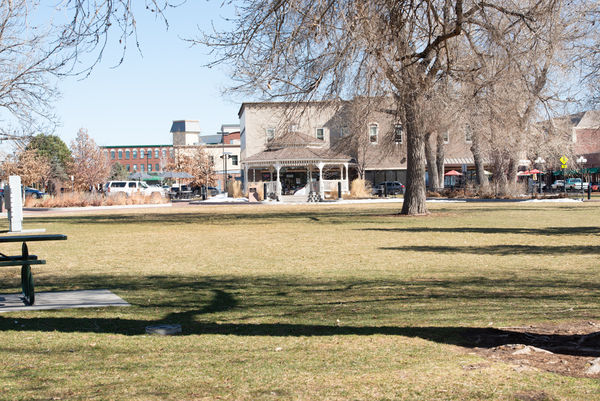

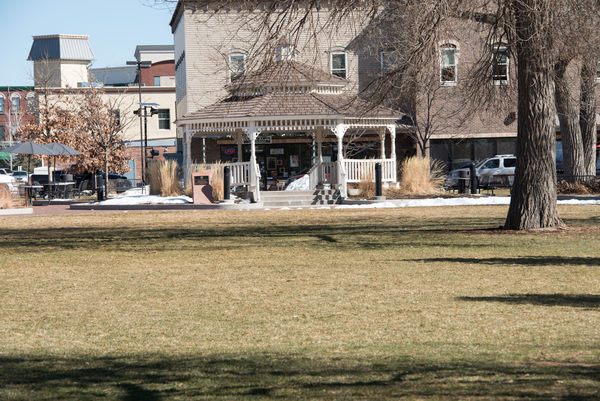
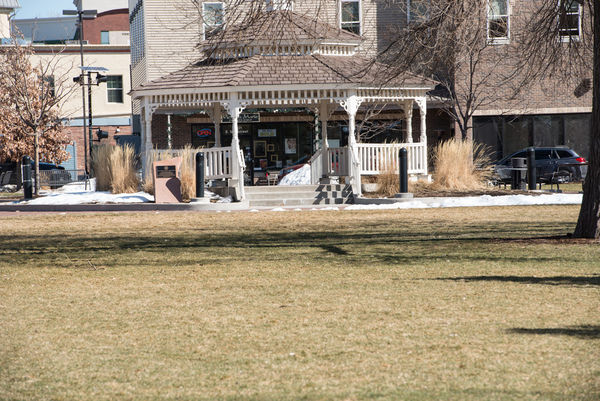
Aug 20, 2018 12:11:32 #
Anhanga Brasil
Loc: Cabo Frio - Brazil
Rich1939 wrote:
I really like your 2nd image!
Thank you. Hard to compose because I was on a grass field
with holes and levels.
Aug 20, 2018 12:14:25 #
Anhanga Brasil
Loc: Cabo Frio - Brazil
Linda From Maine wrote:
Otto, thank you for joining the conversation! In my area, we just say "skate park" 
I hope you've been enjoying your time on UHH. If you haven't yet discovered the specialty sections, click
on "all sections" at the bottom of this page.

I hope you've been enjoying your time on UHH. If you haven't yet discovered the specialty sections, click
on "all sections" at the bottom of this page.
Thank you, I am enjoying and I really like some sections like Photo Analyses.
That's too much to read and so few time...
Aug 20, 2018 12:14:31 #
Linda From Maine wrote:
He was covered under my comment, "you have hopefully read the thoughtful commentary that did not include photo examples,", but I will list all who did not include photos and some who did, but on other pages:
Captain C page 1
cwilson341 page 1
Gene51 addressing Captain C's point (page 3)
fuminous page 4
Bipod page 4
blackest page 5
kenievans page 5 (with link to an article)
granbob page 5
Many thanks to everyone!
Captain C page 1
cwilson341 page 1
Gene51 addressing Captain C's point (page 3)
fuminous page 4
Bipod page 4
blackest page 5
kenievans page 5 (with link to an article)
granbob page 5
Many thanks to everyone!
You’ve worked hard at this thread Linda and it’s been very worthwhile (IMO) - many thanks for your efforts and avoidance of bloodshed!
Aug 20, 2018 12:17:52 #
Now, to prove that moving DOES change perspective, here are three images all taken at 35mm. Note the area circled in image #1 and see how the relationship of the objects (perspective) changes.
Case closed.
Case closed.


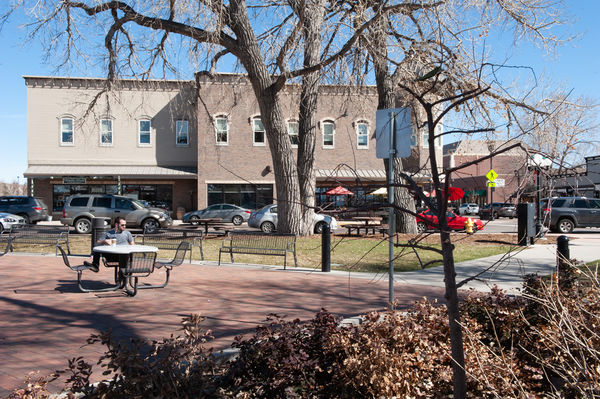
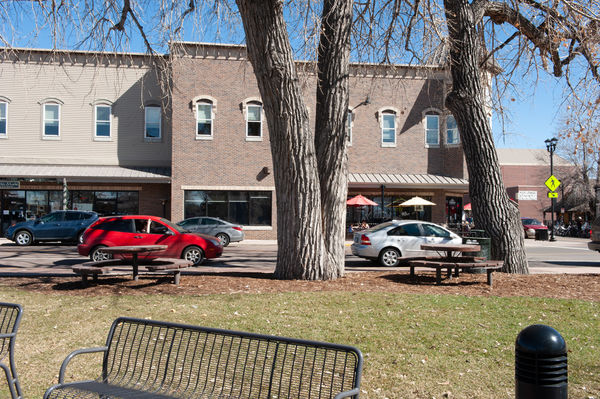
Aug 20, 2018 12:28:40 #
JD750 wrote:
Nice work and the clouds definitely provide depth as does the effect visible in the water that is in line with the island. That effect was made possible by large DOF. I like the effect used there. You might consider widening the effect to about the width of the island and using a softer transition on the edges and see how you like that.
I think the water effect you see is the shadow of the overhead clouds. That was naturally occurring. You can see the light on the left side of the island and the shadow below the cloud on the right.
Yes, it does add to the depth, but to widen it would be trying to change the direction of the light wouldn’t it?
P
Aug 20, 2018 12:30:55 #
LoneRangeFinder wrote:
And your topic will disappear faster than a mouse in a room full of cats
How is that (page 2) prediction working out for you here on page 8??
Aug 20, 2018 12:35:25 #
dsmeltz wrote:
How is that (page 2) prediction working out for you here on page 8??
There does seem to be more genuinely intelligent, skillful and interested photographers than haters and whiners. Which is a great thing. Kudos to Linda for encouraging us to think!
Aug 20, 2018 15:53:40 #
CaptainC wrote:
Nope. Same camera-to-subject distance will yield ZERO perspective change. It simply is not possible. You can do all the lens/focal length changing you want and it will not change physics.
Here are four images taken at 70, ,105,145, and 200mm. Note the relationship of objects to one another and note that as I zoom in, those relationships (perspective) do not change. Focal length NEVER EVER affects perspective.
Here are four images taken at 70, ,105,145, and 200mm. Note the relationship of objects to one another and note that as I zoom in, those relationships (perspective) do not change. Focal length NEVER EVER affects perspective.
That is false. I took your 105 and 200mm shots and enlarged the 105 so that the most distant towers were congruent. EVERYTHING else is off, as shown in the transparency and in the perspective lines. It would be even worse if 55mm and 200mm compared.
Focal length of lens DOES MATTER.
Aug 20, 2018 15:59:20 #
Linda From Maine wrote:
Many thanks to new and returning participants! If ... (show quote)
A great idea, and a (mostly) enlightening series of posts! We sure does gots a mixed bag o' folks chere!
Aug 20, 2018 16:47:47 #
artBob wrote:
That is false. I took your 105 and 200mm shots and enlarged the 105 so that the most distant towers were congruent. EVERYTHING else is off, as shown in the transparency and in the perspective lines. It would be even worse if 55mm and 200mm compared.
Focal length of lens DOES MATTER.
Focal length of lens DOES MATTER.
You are free to wallow in your ignorance of science. Sad. If I cared, I would spend some time showing how one actually measures perspective.
Real photographers have known that ONLY movement affects perspective since....well...forever.
Aug 20, 2018 17:04:42 #
Sorry folks! I'm a latecomer to the party! I hate to interrupt all the fun but here's my take on the matter. 
Hi folks! Interesting topic!
I did not want to write a dissertation on optics and perspective- there are already a number of very learned commentaries offered by others, but rather a kinda ânuts and boltsâ post on how I use wide angle focal lengths in practical usage in my commercial photography and portraiture and of course this has to do with perspective control.
I do, however, would like to perhaps clarify somethings about wide angle lens usage in portraiture. Generally speaking, it is a rule of thumb to use longer focal lengths for portraiture to avoid distortion. Theoretically, wide angle lenses do not necessarily and intrinsically introduce distortion such as exaggeration of facial features etc. and it is true that perspective is influenced by the camera to subject distance rather than focal length. Problem is, when using shorter focal lengths, in order to fill the frame for compositional purposes, in a closeup or head and shoulder portrait, the distance would need to be disproportionately close- too close and thus the aesthetically incorrect rendition of the subjects face. Another consideration is that certain wide angle lenses, especially super-wide formulas may also have intrinsic aberrations such as barrel distortion, curvature of field and other gremlins that may exacerbate the problems.
Having written the aforementioned, in my own practice, I do employ wide angle lenses for some of my portrait photography- in fact, I categorize it as wide angle environmental portraiture. This is a method where I want to include foreground and especially background elements, in sharp detail- no âbokehâ in this particular style! This can be very effective in corporate portraiture, family and lifestyles work, wedding and special occasions formal and causal portraits. It adds a storytelling element about the subject. The caveats are firstly the use of a modernly wide angle focal length, a 35mm or thereabout on a full frame camera or the equivalent in other formats. About 3/4 length or full length view of the subject and taking care in posing the subject so that the hands and arms are close to the same plane as the face. The camera position should be at about the subject's chest level and not tilted upward or downward otherwise elongation or foreshortening can occur. In terms of âlayers' in composition, foreground elements- framing or props, the subject and the background proved dimensionality and depth to. the image.
In architectural, interior and exterior photography, forced perspective to create dynamic lines as well as interesting abstract renditions is nothing new and has its place in commercial and editorial photography as well as fine art work. I frequently receive assignments to product that kind of imagery for annual reports, office décor, brochure covers etc. Many architects, realtors and landlords, however, don't want their buildings to appear as dynamic geometric designs but prefer kinda picture perfect architectural rendering-like images. They don't want exaggerated perceptions of interiors, structures seemingly falling over forward or backward, or low-rise buildings with converging lines vanishing into infinity. Again, wide angle lenses are employed for their wider field of view especially having to operate in close quarters or difficult viewpoints and the greater degrees of depth of field that are obtainable. In the fil era, I did all of this work with a view camera and could depend on all the camera movements to provide more depth of field and make all perspective corrections. Nowadays it's a tilt shift lens to the rescue. With an ordinary wide angle lens natural perspectives are attainable by keeping the camera parallel to the vertical planes of the structure, avoiding tilting upwards or downward and correcting for too much ground or sky or ceiling and floor in cropping. Also- some perspective correction can be applied in post processing. The forced perspective image of the office building was done for the company that provided the glass. The more âbread and butterâ image of the apartment building was done for the rental company.
As in portraiture, wide angle rendition can provide those compositional layers that provide conventionality and depth to architectural and landscape work. Longer focal length lenses have their advantages too, however, I sometimes find that very long lenses,with their compression of perspective my tend to bring the background in too close and negates the illusion of space and depth in certain images.
I found Captain's remarks about âvisual liesâ very interesting. In my own experience I do have art directors, clients and editors asking me to do what I jokingly call âvisual hyperboleâ. This is where exaggerated perspectives is a handy tool for emphasizing something in an image that adds impact and drives the story home.
A few weeks ago, a local editor was doing a story on our city's infrastructure repair program messes up traffic every summer and how both drivers and pedestrians begin to âsee redâ what with virtually every street being under construction. Time to exaggerate the size of the sign and pump in some extra saturation! I made this image that image for his cover story. Fake news? Not really! The big ugly heavy equipment was in the centerfold. All wide angle!
OK So he flower pots ain't really larger that the bus but the shot was for the landscape company that decorated some of the main bus stops and stations. Nothing to glamorous about a company that digs up gas stations are replaced all the underground pumps and pipes so a litter forced perspective makes for a better annual report cover.
The room interior was done for the flooring company that so the emphasis was on the FLOOR! The âCanada Postâ philatelic poster was a still life on tabletop- no PhotoShop- the perspective provided âlayersâ. The wide angle lens made for a more dynamic shot of the coins for the Royal Canadian Mint. The wedding candid shot shows no signs of distortion although a wide angle lens was used to take in the activities in a large ballroom and provided foreground framing and layers of composition. The you man studies in the quiet of the sanctuary of his synagogue. The following week he will be called to read the Torah in the presence of the entire congregation for his Bar Mitzvah. Originally shot on film- medium format Hasselblad with a 60mm lens- slight wider than normal. Subject is lighted by electronic flash- shutter is dragged to expose for background- f/22 at 45 seconds! Flash fires- modeling lights shot off and time exposure begins. Young man is gobo-ed so no ambient light strikes him and the has to holds still for 45 seconds. Did tit in two- the second one bracketed to 90 seconds- DON'T ASK! This had to be the most patient 13 year old kid I ever encountered!
It certainly important to understand all the optical science and theory pertaining to lens usage. From a more creative point of view, actual experimentation and practice is just as important and perhaps more practical. When you put on you favorite wide angle prime lens or zoom in to you shortest focal length, familiarize yourself with the visual rendition you get a various distances, angles and focal length settings. Carefully observe the perspective, look for layers, and decide on the story you want to tell with each picture. Consider foreground elements for framing the main subject or lines in the foreground that lead the viewers' eyes into the motif of the image. Decide on how you wish to render the background and if details in the background help or hinder the impact of the photograph.
I hope this helps. Just before I leave let me mess a bit more with y'alls heads. Not only is perspective controlled by camera/subject distances but the way you perceive perspective is also dependent on the size of the print or viewing monitor or screen and the distance from which it is viewed. So theoretically, if you photography you mother-in-law, close up, with you 10mm lens so as to create a âcaricatureâ of her personality- if she views an 8x10 print at about 2 inches away, the image will be perfectly flattering! By the same token, if you photograph you cat, with the Rocky Mountains in the background, with you 1,000mm lens and view a 16x20 print from 20 yards away- it might also look normal. I'm not exactly sure of the math but I'll figure it out- this is something to think about for next time! Hyperbole? Maybe!
PS- For all you iconic photographer fans, give Ansel, Yosef and Anne a day off and check out the masterful portraiture of Arnold Newman. This favorite âportraitâ lens was a 90mm Super Angulon on a 4x5 format.

Hi folks! Interesting topic!
I did not want to write a dissertation on optics and perspective- there are already a number of very learned commentaries offered by others, but rather a kinda ânuts and boltsâ post on how I use wide angle focal lengths in practical usage in my commercial photography and portraiture and of course this has to do with perspective control.
I do, however, would like to perhaps clarify somethings about wide angle lens usage in portraiture. Generally speaking, it is a rule of thumb to use longer focal lengths for portraiture to avoid distortion. Theoretically, wide angle lenses do not necessarily and intrinsically introduce distortion such as exaggeration of facial features etc. and it is true that perspective is influenced by the camera to subject distance rather than focal length. Problem is, when using shorter focal lengths, in order to fill the frame for compositional purposes, in a closeup or head and shoulder portrait, the distance would need to be disproportionately close- too close and thus the aesthetically incorrect rendition of the subjects face. Another consideration is that certain wide angle lenses, especially super-wide formulas may also have intrinsic aberrations such as barrel distortion, curvature of field and other gremlins that may exacerbate the problems.
Having written the aforementioned, in my own practice, I do employ wide angle lenses for some of my portrait photography- in fact, I categorize it as wide angle environmental portraiture. This is a method where I want to include foreground and especially background elements, in sharp detail- no âbokehâ in this particular style! This can be very effective in corporate portraiture, family and lifestyles work, wedding and special occasions formal and causal portraits. It adds a storytelling element about the subject. The caveats are firstly the use of a modernly wide angle focal length, a 35mm or thereabout on a full frame camera or the equivalent in other formats. About 3/4 length or full length view of the subject and taking care in posing the subject so that the hands and arms are close to the same plane as the face. The camera position should be at about the subject's chest level and not tilted upward or downward otherwise elongation or foreshortening can occur. In terms of âlayers' in composition, foreground elements- framing or props, the subject and the background proved dimensionality and depth to. the image.
In architectural, interior and exterior photography, forced perspective to create dynamic lines as well as interesting abstract renditions is nothing new and has its place in commercial and editorial photography as well as fine art work. I frequently receive assignments to product that kind of imagery for annual reports, office décor, brochure covers etc. Many architects, realtors and landlords, however, don't want their buildings to appear as dynamic geometric designs but prefer kinda picture perfect architectural rendering-like images. They don't want exaggerated perceptions of interiors, structures seemingly falling over forward or backward, or low-rise buildings with converging lines vanishing into infinity. Again, wide angle lenses are employed for their wider field of view especially having to operate in close quarters or difficult viewpoints and the greater degrees of depth of field that are obtainable. In the fil era, I did all of this work with a view camera and could depend on all the camera movements to provide more depth of field and make all perspective corrections. Nowadays it's a tilt shift lens to the rescue. With an ordinary wide angle lens natural perspectives are attainable by keeping the camera parallel to the vertical planes of the structure, avoiding tilting upwards or downward and correcting for too much ground or sky or ceiling and floor in cropping. Also- some perspective correction can be applied in post processing. The forced perspective image of the office building was done for the company that provided the glass. The more âbread and butterâ image of the apartment building was done for the rental company.
As in portraiture, wide angle rendition can provide those compositional layers that provide conventionality and depth to architectural and landscape work. Longer focal length lenses have their advantages too, however, I sometimes find that very long lenses,with their compression of perspective my tend to bring the background in too close and negates the illusion of space and depth in certain images.
I found Captain's remarks about âvisual liesâ very interesting. In my own experience I do have art directors, clients and editors asking me to do what I jokingly call âvisual hyperboleâ. This is where exaggerated perspectives is a handy tool for emphasizing something in an image that adds impact and drives the story home.
A few weeks ago, a local editor was doing a story on our city's infrastructure repair program messes up traffic every summer and how both drivers and pedestrians begin to âsee redâ what with virtually every street being under construction. Time to exaggerate the size of the sign and pump in some extra saturation! I made this image that image for his cover story. Fake news? Not really! The big ugly heavy equipment was in the centerfold. All wide angle!
OK So he flower pots ain't really larger that the bus but the shot was for the landscape company that decorated some of the main bus stops and stations. Nothing to glamorous about a company that digs up gas stations are replaced all the underground pumps and pipes so a litter forced perspective makes for a better annual report cover.
The room interior was done for the flooring company that so the emphasis was on the FLOOR! The âCanada Postâ philatelic poster was a still life on tabletop- no PhotoShop- the perspective provided âlayersâ. The wide angle lens made for a more dynamic shot of the coins for the Royal Canadian Mint. The wedding candid shot shows no signs of distortion although a wide angle lens was used to take in the activities in a large ballroom and provided foreground framing and layers of composition. The you man studies in the quiet of the sanctuary of his synagogue. The following week he will be called to read the Torah in the presence of the entire congregation for his Bar Mitzvah. Originally shot on film- medium format Hasselblad with a 60mm lens- slight wider than normal. Subject is lighted by electronic flash- shutter is dragged to expose for background- f/22 at 45 seconds! Flash fires- modeling lights shot off and time exposure begins. Young man is gobo-ed so no ambient light strikes him and the has to holds still for 45 seconds. Did tit in two- the second one bracketed to 90 seconds- DON'T ASK! This had to be the most patient 13 year old kid I ever encountered!
It certainly important to understand all the optical science and theory pertaining to lens usage. From a more creative point of view, actual experimentation and practice is just as important and perhaps more practical. When you put on you favorite wide angle prime lens or zoom in to you shortest focal length, familiarize yourself with the visual rendition you get a various distances, angles and focal length settings. Carefully observe the perspective, look for layers, and decide on the story you want to tell with each picture. Consider foreground elements for framing the main subject or lines in the foreground that lead the viewers' eyes into the motif of the image. Decide on how you wish to render the background and if details in the background help or hinder the impact of the photograph.
I hope this helps. Just before I leave let me mess a bit more with y'alls heads. Not only is perspective controlled by camera/subject distances but the way you perceive perspective is also dependent on the size of the print or viewing monitor or screen and the distance from which it is viewed. So theoretically, if you photography you mother-in-law, close up, with you 10mm lens so as to create a âcaricatureâ of her personality- if she views an 8x10 print at about 2 inches away, the image will be perfectly flattering! By the same token, if you photograph you cat, with the Rocky Mountains in the background, with you 1,000mm lens and view a 16x20 print from 20 yards away- it might also look normal. I'm not exactly sure of the math but I'll figure it out- this is something to think about for next time! Hyperbole? Maybe!
PS- For all you iconic photographer fans, give Ansel, Yosef and Anne a day off and check out the masterful portraiture of Arnold Newman. This favorite âportraitâ lens was a 90mm Super Angulon on a 4x5 format.
If you want to reply, then register here. Registration is free and your account is created instantly, so you can post right away.











